Reading the Collections, Week 9: Cartes de Visite
“The past is a foreign country: they do things differently there”.
So, famously, begins The go-between by L.P. Hartley. I was a visitor to that foreign country recently; my passport, the cartes de visite of Special Collections, and my guide, Rachel Nordstrom, who is our Photographic Research and Preservation Officer.
Just what are cartes de visite? As William Darrah describes, they are photographs pasted onto small cards, about the size of the visiting cards so familiar to readers of fiction from the Regency to the Edwardian period. Visiting cards were an essential for polite society, to smooth or even to snub the social path, as Catherine experiences when she visits Miss Tilney in Northanger Abbey. Cartes de visite, however, were to become practically omnipresent, aspired to – and accessible by – rich and poor alike.
As soon as technological advances allowed the production of multiple images at an affordable price, the taking, buying and sharing of cartes de visite took off to such an extent that it has been called ‘cartomania’. In the second half of the 19th century studios proliferated. Orphan Sally Lockhart in London, in The Ruby in the Smoke, recognises the huge potential of the market for photographs as a source of income. In America, the Civil War was providing another impetus. Images, and their taking, had now been democratised.
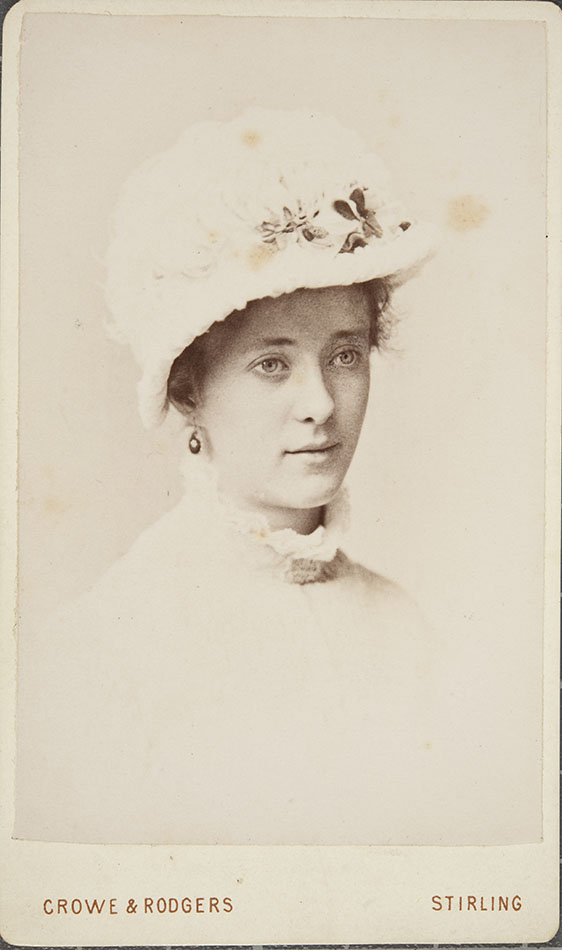
The small size of the cartes, and the production not just of family portraits but of celebrity images and landscapes, meant that they lent themselves very much to collecting. Albums were produced to store and display them. When I visited Special Collections, Rachel showed me several of these albums. I was particularly interested in the cartes de visite from the Hay Fleming Collection as many of them are from local St Andrews photographers.
As Leo Colson ultimately discovers in The go-between, they may do things differently in that foreign country, but human nature remains very much the same. Most of us will carefully consider how our facebook profile pictures appear. Echoing the small format of the cartes, facebook profiles allow us to control the image we present to the world – to put our best face forward. This young woman has done just that, and her portrait is one of the most charming in Hay Fleming’s collection.
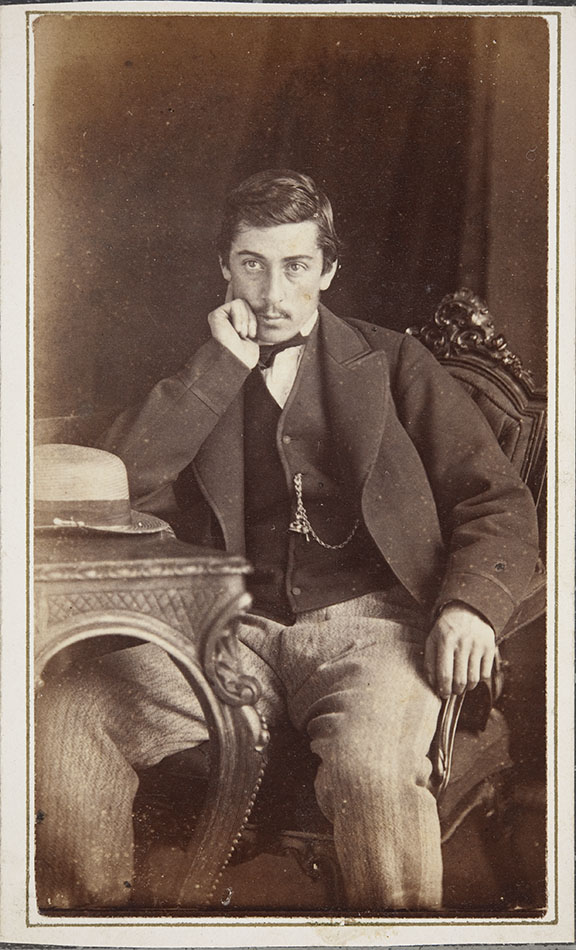
How we present ourselves was as important then as it is now. We have always recognised that clothes make the man. Dapper never goes out of style.
Today we may like to share photographs of ourselves in home or holiday situations. With props and backdrops, the background too could be controlled for cartes de visite. This image was taken in an Australian studio, but the vista is of an elegant Italianate garden.
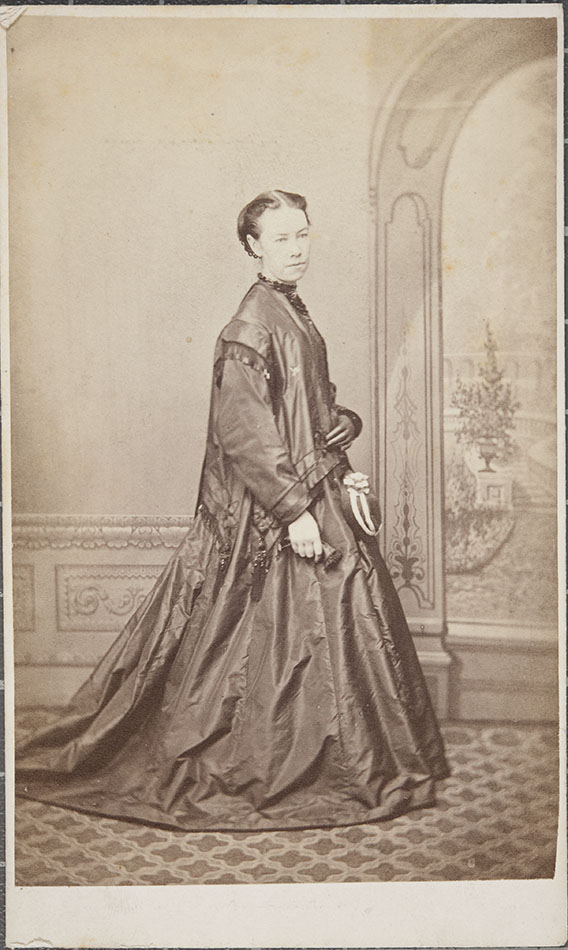
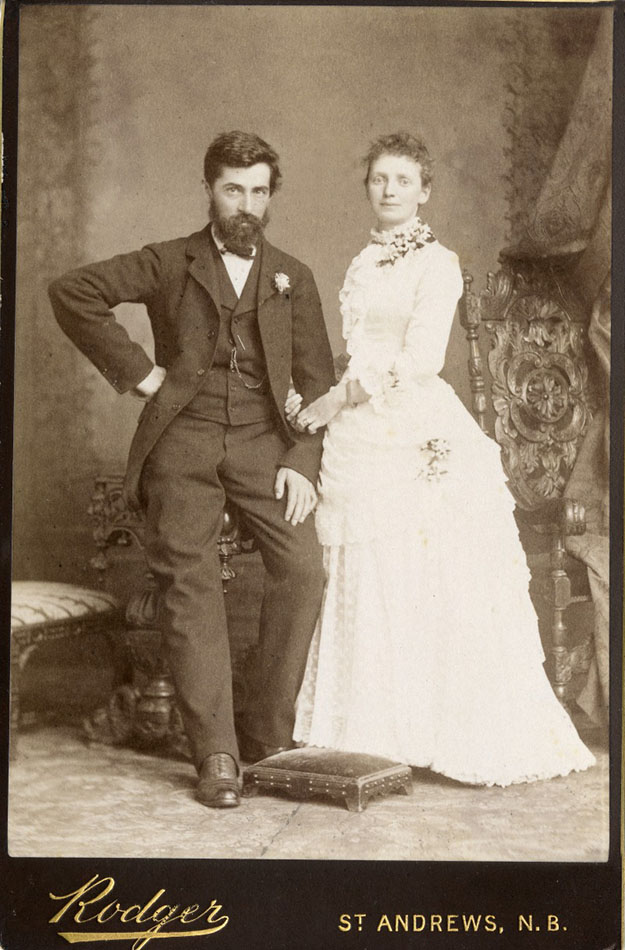
Just like today (and just as we do on social media), images of family and friends were shared and collected. This is the young David Hay Fleming himself with his wife.
Also like today, the quality of images could vary widely. Nowadays we can all take photographs and share them instantly online, with little technical ability needed. Not all of us can have a good eye, however, and equally, the talents of many photographers rushing to take advantage of the demand for cartes were pedestrian rather than artistic. Specific flaws from printing or indeed perceived flaws in the subject’s appearance could, however, be retouched. Rachel explained to me that evidence of retouching can now often be seen as spots on an image because they have not faded along with the original print, as in this portrait below of a woman with a baby. Today, we have access to Photoshop but retouching with this can also be detected (sometimes amusingly) if used unwisely!
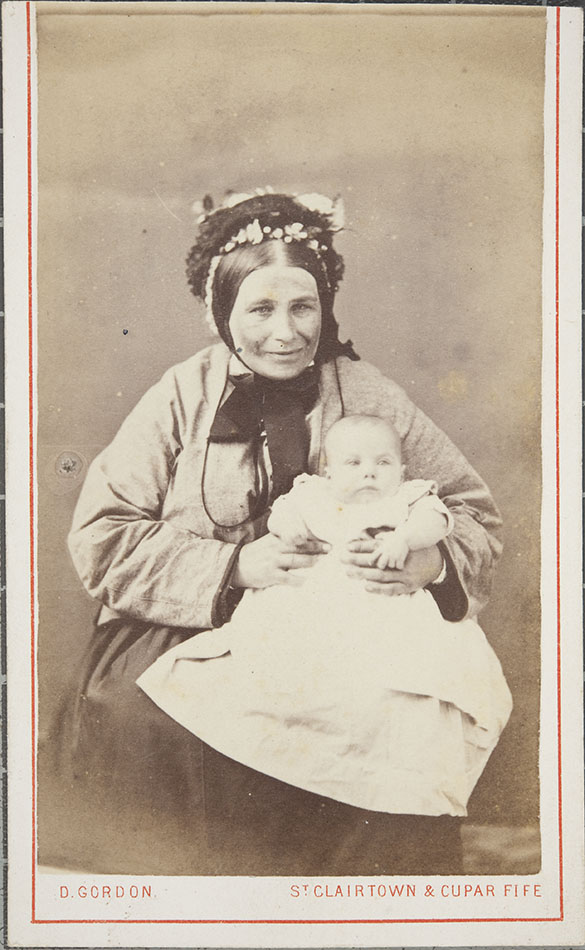
So many cartes de visite were produced that examples can be purchased easily and cheaply today. A simple search on eBay comes up with thousands. It’s fascinating detective work to try to date them, not only from the clothes being worn, but as Rachel also explained from the style of the card itself. Pink and grey card enjoyed a vogue at different times, as did the props used, the size and thickness of the cards and the style of any borders. Photographers’ details, printed on the back of the card, became fuller in content and more elaborate in style as the century progressed.
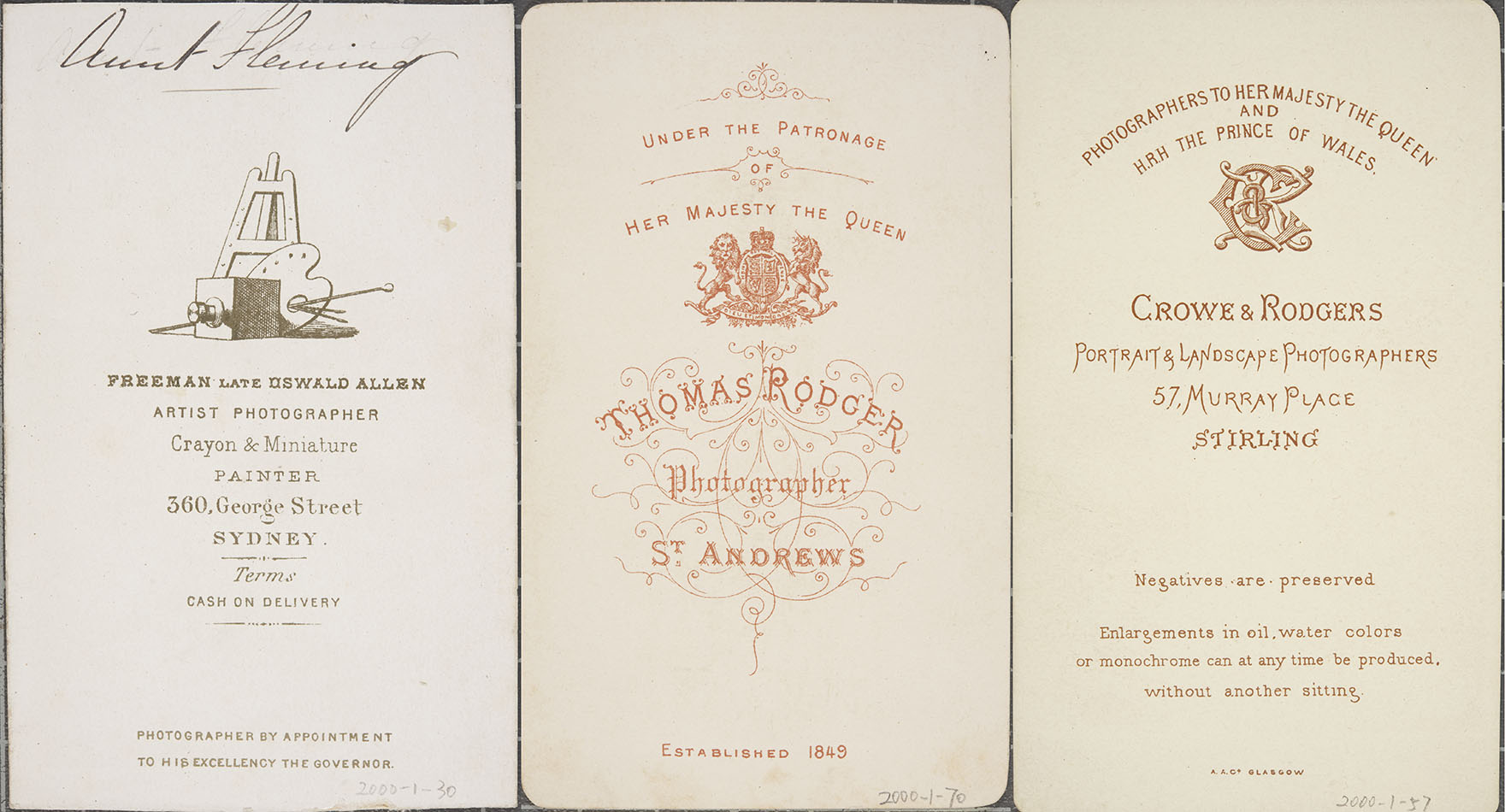
With these sometimes prosaic images any of us can gaze across nearly two centuries into the past, directly into the faces of our ancestors, familiar in all their human interests, frailties and emotions. It may be that they do things differently in the past, but cartes de visite show that, as has often been observed,
“Plus ça change, plus c’est la même chose”.
-Anne Wilcox
Acquistions & Cataloguing
Fascinating. Your posts are always interesting, and today's gave me new knowledge. I didn't even know such things existed!
Really enjoying this whole series, especially today's post (particularly the Pullman shoutout)!